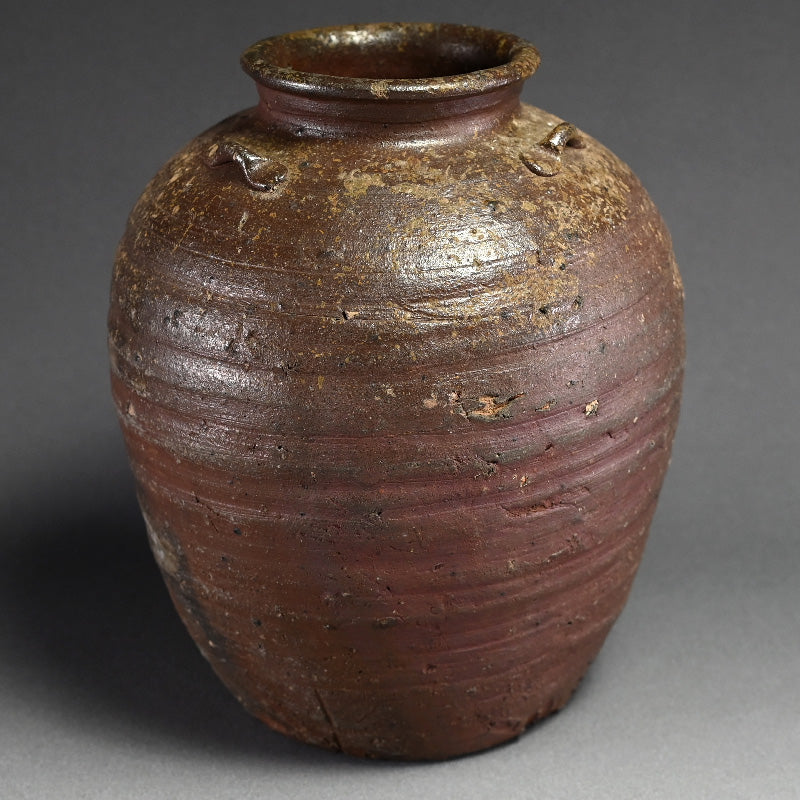Momoyama To Early Edo Bizen Tsubo ー桃山時代 備前 種壺
Momoyama To Early Edo Bizen Tsubo ー桃山時代 備前 種壺
Item Code: K384
Couldn't load pickup availability
An exemplary Bizen Tsubo typifying the late Momoyama style in rough dark clay with smoothed finger grooves spiraling up the body, and a smattering of flying ash typical of the 16th century with a kiln mark (kamajirushi) in the shape of a cross at the base opposite a hash mark. Occasional Shiseki and Ishihaze break the surface, testament to the less refined ‘yamadzuchi’ mountain clay which was used. The base is baked to a stone-like texture and sheen. This is a perfect example of the pottery produced in Bizen during the Momoyama period. It is 24 cm (9-1/2 inches) diameter, 28.5 cm (11-1/4 inches) tall and in excellent condition.
Bizen is one of the Rokkoyo or six ancient kilns of Japan. It is considered by many to be the quintessential Japanese pottery. It was traditionally produced in and around the village of Imbe in Bizen province, from where it received its name. It is therefore also known as Imbe or Inbe ware. As we know it today it made its appearance during the Kamakura period of the 14th century. It experienced its first peak during the Momoyama period of the 16th to early 17th centuries when the unadorned aesthetic was found to blend well with the rustic confines of the tea room. It remained strong throughout the Edo period, but fell into decline after the Meiji restoration, and owes much thanks to Kaneshige Toyo for helping to revive it in the second quarter of the 20th century, a task for which he was granted the status of living National Treasure, and has enjoyed great popularity since.
Share






























